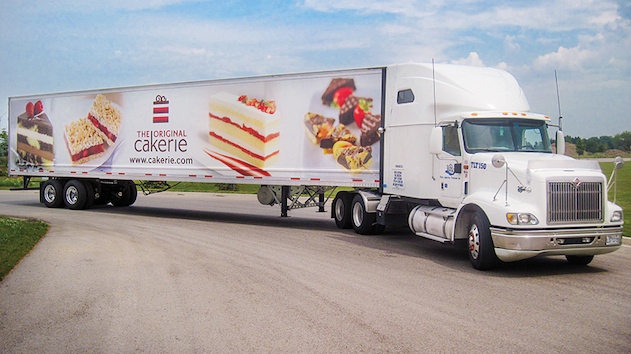
Leading dessert manufacturer certifies to GFSI food safety & quality standard
By Heather Angus-Lee
Food Safety Processing Bake & Snack Food baking BRC GFSIThe Original Cakerie earns the highest level of BRC Food Standard to meet demands of customers and drive business process improvement

Becoming certifying to a Global Food Safety Initiative (GFSI) standard is definitely not a piece of cake – even if you are a manufacturer of sheet and layer cakes. Just ask Eric Murphy, director of Information Technology at The Original Cakerie (TOC), the largest privately owned dessert manufacturer in Canada. The 500-employee company spent 2012 working towards attaining the highest level of certification to the BRC Food Standard, which falls under the GFSI umbrella of food safety and quality standards.
American and Canadian customers including restaurants, caterers, institutions and retail grocers, initially drove TOC to seek GFSI certification – a trend that is growing more prevalent in the food industry around the world. But the impetus grew beyond customer demand and fit into TOC’s continuous improvement goals “to deliver safe quality food,” notes Murphy.
“We like that BRC mirrors TOC’s framework for policies and procedures that deliver drive to excellence, customer experience, confidence and satisfaction, by delivering safe quality food. We felt BRC was well-aligned for us in terms of providing for our customers’ growth, and for our company to look at how we do things, and continue to drive improvements.” Murphy adds, “I also like the flexibility around training that BRC provides. We can bring the training right into our organization, versus always having to go through outside providers.”
BRC certification was first completed mid-2012 at TOC’s 400-employee Vancouver, B.C. plant, and head office – where the company began 34 years ago – followed by certification at the London, Ont. facility that opened in 2011. Both facilities have received Canadian Food Inspection Agency (CFIA) and the American Food and Drug Agency (FDA) approvals following evaluation of their Good Manufacturing Practices (GMP) and HACCP programs.
At each location, a cross-functional team across all business units, led by the director of QA, worked on the BRC certification  process. TOC employees worked on the integration within shop floor reporting to catch variations and deviations that are captured on the Variation Form. An event is created that is tracked within the company’s Enterprise Resource Planning (ERP) software system, “so we know exactly when these variations have occurred, by whom and for which product,” says Murphy. The event is assigned to a supervisor and reviewed. If it requires further investigation, they have integrated BRC’s Corrective Action Form within their ERP system.
process. TOC employees worked on the integration within shop floor reporting to catch variations and deviations that are captured on the Variation Form. An event is created that is tracked within the company’s Enterprise Resource Planning (ERP) software system, “so we know exactly when these variations have occurred, by whom and for which product,” says Murphy. The event is assigned to a supervisor and reviewed. If it requires further investigation, they have integrated BRC’s Corrective Action Form within their ERP system.
Functionality for food safety, quality management and product development within a food company’s ERP system, such as the JustFoodERP software used by TOC since 2006, makes it easier to change data, processes and procedures to suit BRC certification, says Murphy. For example, “we have a good traceability process – all the way through corrective action.”
The company is currently working on “positive release,” a process based on product subject to testing, in which their ERP system will automatically put a lock on lot holds for a pre-determined window of time. The QA team can then assign specific disposition on the lot or action item, and from that point on, the operations team does what needs to be done. “We have better control between the time we manufacture and the time we do the testing,” says Murphy, “Shipping of products occurs once all testing has been received and validated.”
Murphy says TOC is also in the midst of fully integrating all their recipe information, including instructions within the production BOM and product specs, into one central repository. “The elimination of duplicate information is key to managing the shop floor,” he notes. “Capturing data costs money; if data is entered once, you should be able to use it across your system.”
To this end, the BRC Food Standard certification process has proven invaluable, says Murphy, not to mention the accomplishment of meeting such a strict global standard. “We’re very proud of being BRC-certified at both our facilities.”
7 Components of BRC Food Standard
Eric Murphy, IT director for The Original Cakerie, says he particularly appreciates the seven components of BRC Food Standard that are identified by the global standards body, which are:
- Senior management commitment and continual improvement.
- Food safety plan based on an effective HACCP program.
- Food safety and quality management system.
- Site standards.
- Product control.
- Process control.
- Personnel expectations.
Heather Angus-Lee, a long-time business journalist and editor of a national manufacturing magazine, now writes for JustFoodERP. She can be reached at heather.angus-lee@justfooderp.com
Print this page
